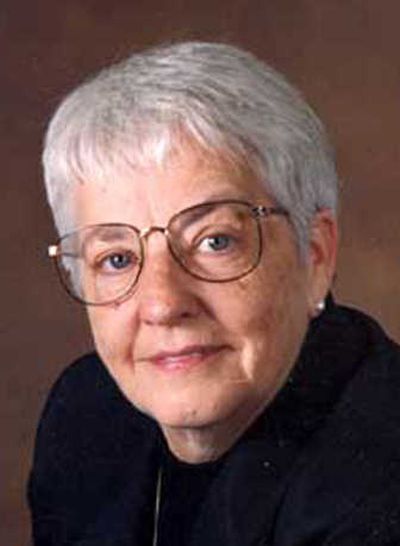‘Blue eyes, brown eyes’ teacher to talk

Some 40 years ago, Jane Elliott famously divided her Iowa classroom into the blue eyes and the brown eyes in an attempt to illustrate racism for white kids.
Since then, she’s spent decades traveling the world, reproducing the exercise and serving as an outspoken foe of racism. Though many political and social changes have come and gone – and an African-American man is running for president – Elliott believes the fundamental problems of racism are alive and well.
“We didn’t solve them,” Elliott said. “We talked about them. … We are not over the problem.”
Elliott will speak at several forums this week in Spokane – Thursday and Friday at Spokane Community College, and Friday at Gonzaga University.
Now 74, Elliott has for decades traveled the world giving speeches and conducting her “blue eyes, brown eyes” exercise – though she won’t be doing that as part of her local visit.
The exercise, which Elliott first conducted in 1968 on the heels of the assassination of Martin Luther King Jr., grants one eye color superior status – blue-eyed students are given extra recess, lunch privileges and cultural assumption of intelligence, and the brown-eyed are not. A “Frontline” documentary made in 1985 includes footage from that original experiment: Soon enough, the “superior” kids start acting insulting and oppressive, and those with brown eyes become defensive and upset – the exercise disappears and becomes a reality.
“That was just an attempt to make my white students learn what it feels like to be treated badly based on things that are out of their control,” she said. “It’s much worse for people who have never been powerless.”
The exercise caused a furor, and Elliott and her family received insults and threats. But she also became something of a crusader, and her exercise took on a life of its own. She’s done it with adults in countries around the world, and she said it has the same effect – the “inferior” group develops hostility and anger very quickly, and their objections run into resistance from the others.
“It’s the same with adults as children, with one big difference – adults are more likely to be violent,” she said.
She’s concluded that for white men, in particular, the feeling of true powerlessness is so rare that even a bit of hypothetical powerlessness in a classroom exercise can be traumatic. With any luck, their experience in the exercise will help them develop empathy and understanding, she said.
“To educate someone means to lead them out of ignorance,” she said. “You can’t talk them out of ignorance. You can’t pray them out of ignorance. You can’t preach them out of ignorance. If you create an emotionally significant experience for people, they will learn.”
Though the candidacy of Barack Obama would have seemed impossible during the 1960s, when Elliott began her work, she doesn’t necessarily see Obama as evidence of the country’s triumph over racial divides.
“He is trying to encourage people to deal with him as if color doesn’t matter,” she said. “You can’t say color doesn’t matter in a country that has been racist for 250 years.”